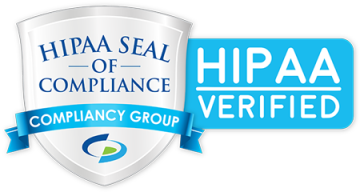Hysterectomy Linked to Long-Term Health Risks
More than 400,000 hysterectomies are performed in the United States each year, often for benign gynecologic diseases.1 Research has demonstrated that hysterectomy with bilateral oophorectomy (surgical removal of the uterus and both ovaries) increases a woman’s risk of cardiovascular disease and other serious health conditions. Based on these findings, the rates of bilateral oophorectomy (removal of both ovaries) at the time of hysterectomy have declined. However, the rates of hysterectomy with ovarian conservation have been rising, particularly in young women.1
This is a worrisome trend. A recent study found that even when the ovaries are left intact, hysterectomy is associated with a significantly higher risk of metabolic conditions and cardiovascular disease.
The findings of the study, published in the journal Menopause, were identified as part of the Rochester Epidemiology Project in Minnesota. More than 2,000 women who had undergone hysterectomy with ovarian preservation for benign disease were followed for nearly 22 years. Each patient was matched to a control, a woman of the same age and resident of the same county, but who did not have a hysterectomy or ovary removal, and therefore served as a reference for comparison.1
The results showed that women who underwent hysterectomy without ovary removal had an increased risk of several chronic diseases:1
• 13% increased risk of high blood pressure
• 14% increased risk of lipid abnormalities
• 18% increased risk of obesity
• 33% increased risk of coronary artery disease
The study also found that the risk of metabolic conditions and cardiovascular disease is especially high in women who undergo a hysterectomy at or before the age of 35. Hysterectomy before 35 is associated with 2.5 times higher risk of coronary artery disease and a 4.6 times increased risk of congestive heart failure.1
The findings of the study have raised concerns that the harmful long-term outcomes of hysterectomy with ovarian conservation have been underestimated thus far.
Hysterectomy is the second most commonly performed major operation in the United States.2 It is common because many gynecologic surgeons believe it has minimal long-term risks. However, the authors of the Rochester study concluded that even when the ovaries are preserved, hysterectomy is associated with a significant increase in the risk of long-term health conditions, especially in patients younger than 35 years old.1
The study underlines the importance of giving serious consideration to alternatives to hysterectomy for benign gynecologic conditions like uterine fibroids, endometriosis, abnormal uterine bleeding, pelvic pain, and pelvic organ prolapse. Less radical treatments such as uterine artery embolization (UAE) are a safe and effective alternative to open surgery.2
What is Uterine Artery Embolization?
Uterine artery embolization, or UAE, is a non-surgical image-guided procedure that effectively treats fibroids in one treatment. This is done by placing a tiny catheter into the uterine artery and blocking the blood flow to the abnormal lining using tiny beads.
Why California Fibroid Center?
At CVI, we provide devoted and specialized care for treating uterine fibroids. All clinical decisions are centered on the patient because CVI is owned and controlled by our physician, who is an embolization expert. The doctor has the freedom to spend as much time as needed for patient consultations and medical procedures. Clinical decisions are made based on what is best for you and your treatment, and not influenced by the interests of a profit-driven hedge fund company. The staff are highly trained and dedicated to the patient experience. This allows us to provide the best care and experience for our patients. Read more here.
Patient Centered. Dedicated. Comprehensive.
- Laughlin-Tommaso SK, Khan Z, Weaver AL, Smith CY, Rocca WA, Stewart EA. Cardiovascular and metabolic morbidity after hysterectomy with ovarian conservation: a cohort study. Menopause. 2018;25(5):483-492.
- Scialli AR. Alternatives to hysterectomy for benign conditions. Int J Fertil Womens Med. 1998 Jul-Aug;43(4):186-91. PMID: 9726846.









